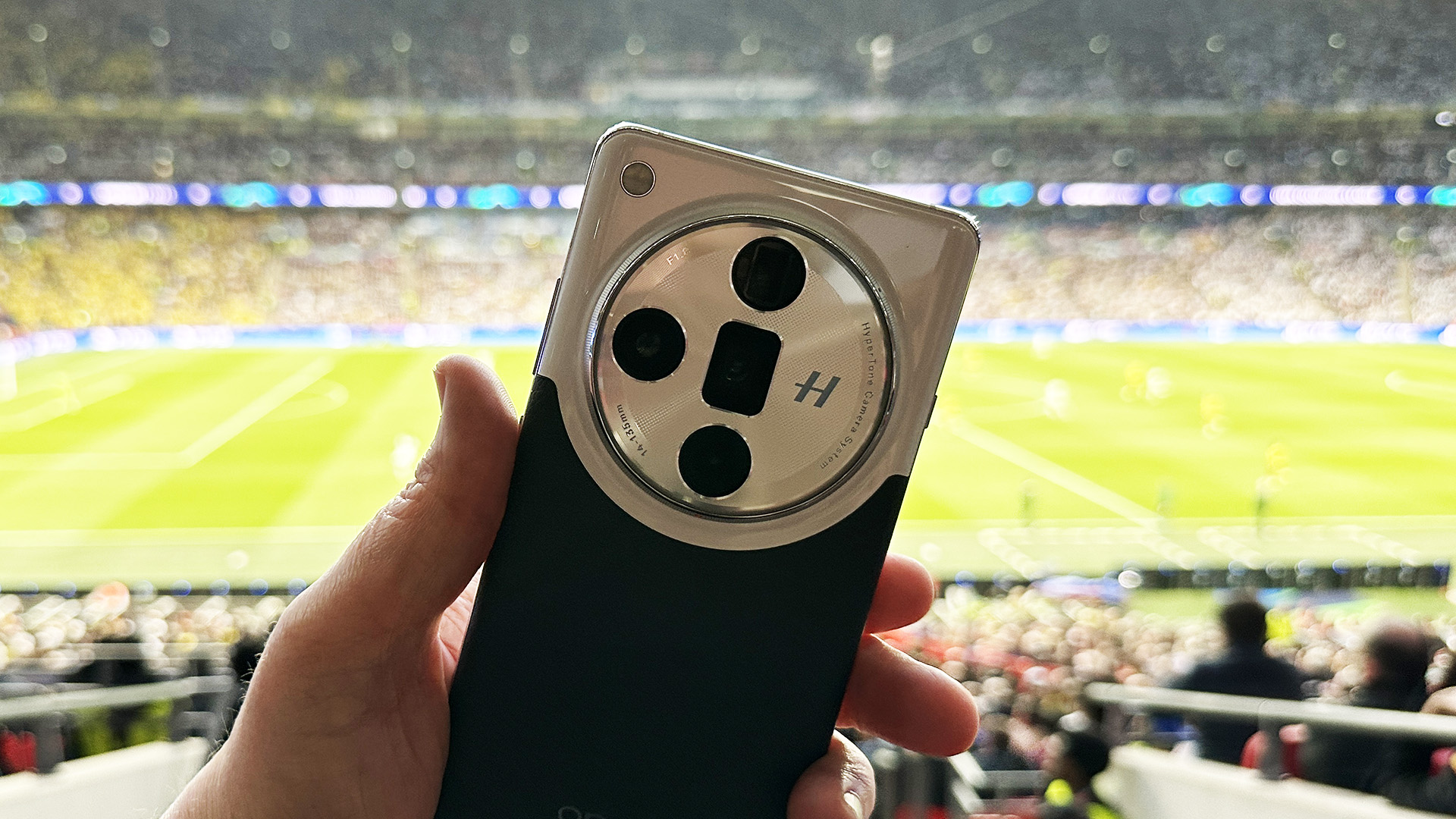
When the Oppo Find X7 Ultra was launched back in January, we and many others heralded its camera as being, potentially, the best on a smartphone today.
Made in partnership with photography heavyweight Hasselblad, the rear unit consists of four 50-megapixel cams in total – a 23mm main featuring the Sony LYT-900 1-inch sensor, with an f/1.8 aperture and optical image stabilisation; a 135mm equivalent super-telephoto using the 1/2.51-inch Sony IMX858 sensor, at f/4.3 and with OIS; a telephoto 65mm equivalent using the 1/1.46-inch Sony IMX 890, at f/2.6 and with OIS; and finally a wide cam (14mm) using a 1/1.95-inch Sony LYT-600 sensor at f/2.0.
In short, this means the camera has a focal length of 14 - 135mm without breaking a sweat or moving into digital territory – highly impressive indeed.
On top of this, as well as Oppo's own HyperTone Image Engine and on-board software, the phone comes with a Hasselblad-centric Master mode that gives you a whole stack of manual camera features and options, to make even more of the multiple lenses.
The only downside is that Oppo itself confirmed that there were no plans to release the phone outside of China, so it's only been available in the UK (and elsewhere) as a grey import. And as such, we've not really had much call to test it to see how it compares with the best smartphones on the market today.
However, with Oppo being a flagship sponsor of the UEFA Champions League and this year's final being held on T3's (and my own) doorstep at Wembley Stadium, this seemed an ideal oppo-tunity (sorry) to give it a whirl.
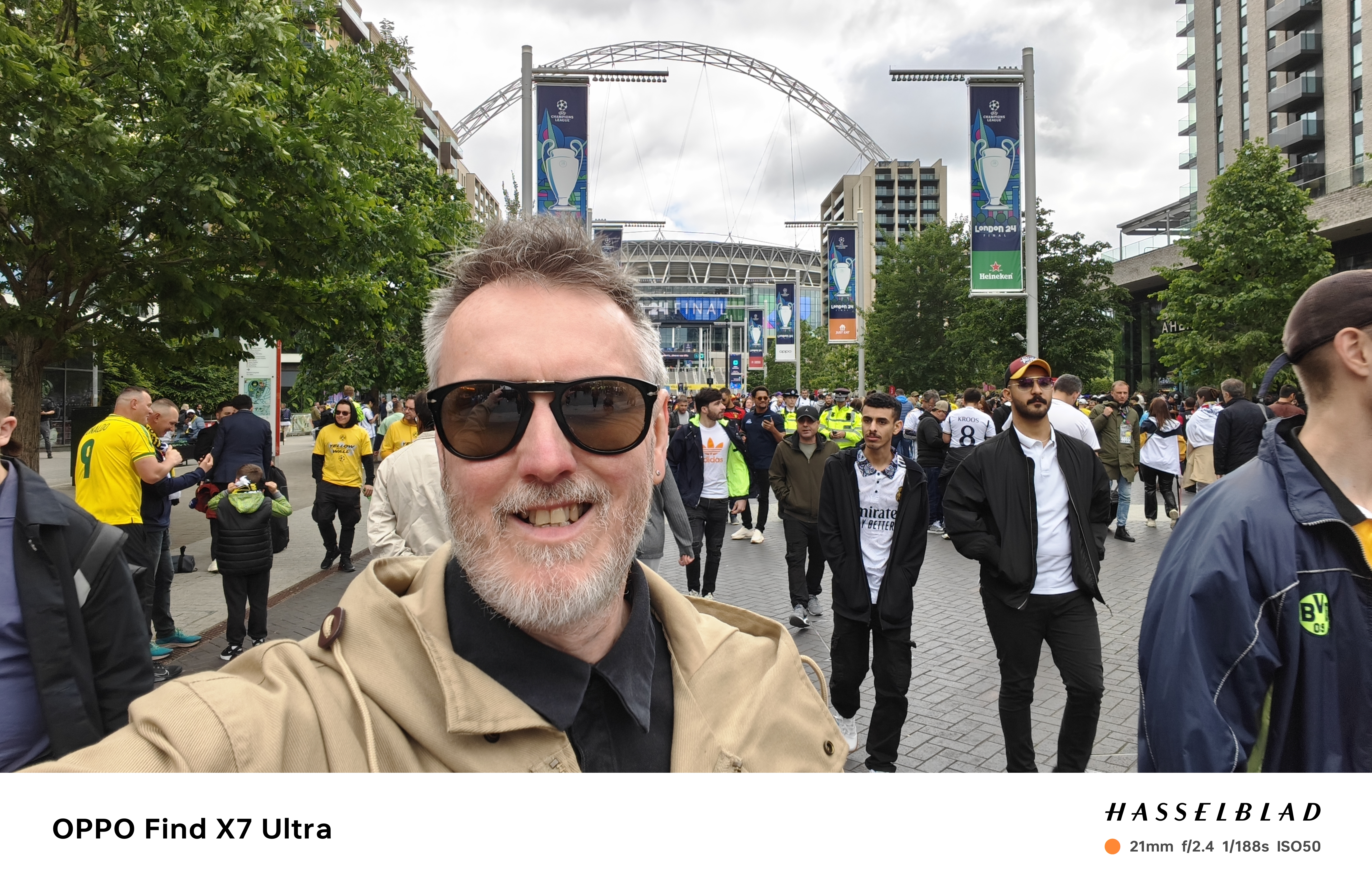
So, with the Oppo Find X7 Ultra in hand, I headed to the final to see just how the camera shaped up – by effectively documenting my day in photo form. I took 100s of pictures, with a few shared here to give you an idea of how capable it truly is.
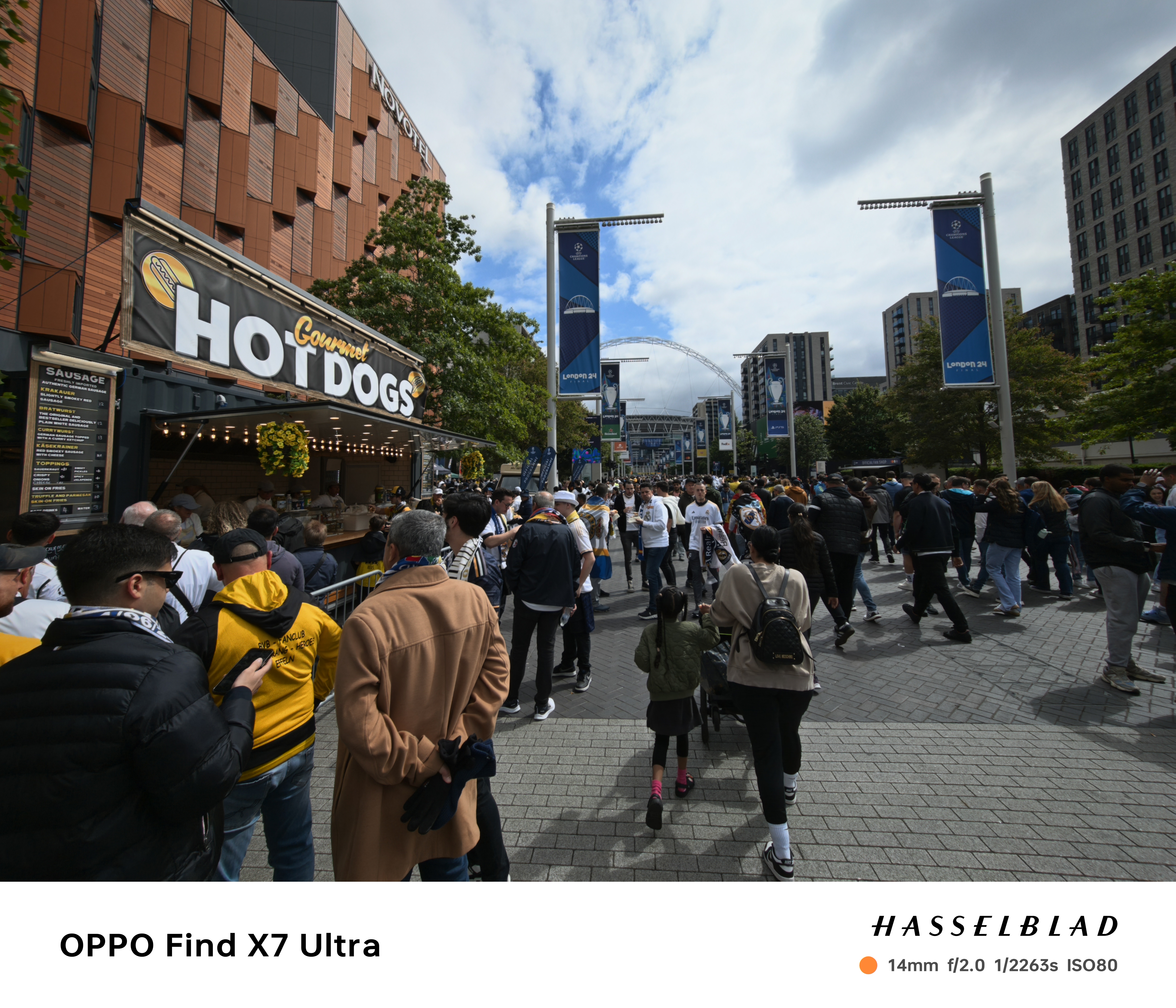

Please note that I stuck to automatic settings throughout (save for altering the aspect ratio from 4:3 to 16:9 about halfway through), even when using Master mode. The images I took have also been posted untouched by any post-processing shenanigans, and the watermark has been kept on each to give you an idea of the automatic settings chosen for each snap.
They have been compressed by T3's own uploading software for use on the web (normal file sizes were around 5 - 8MB per pic, with a resolution of over 4,000 pixels wide), but you should still get a very decent idea (especially when you expand them).
Also note that the main image at the top of this piece was taken using an iPhone 15 Pro Max – I could hardly use the Find X7 Ultra to take a pic of itself. It's the only photo on this page that wasn't taken using the Oppo phone, though.


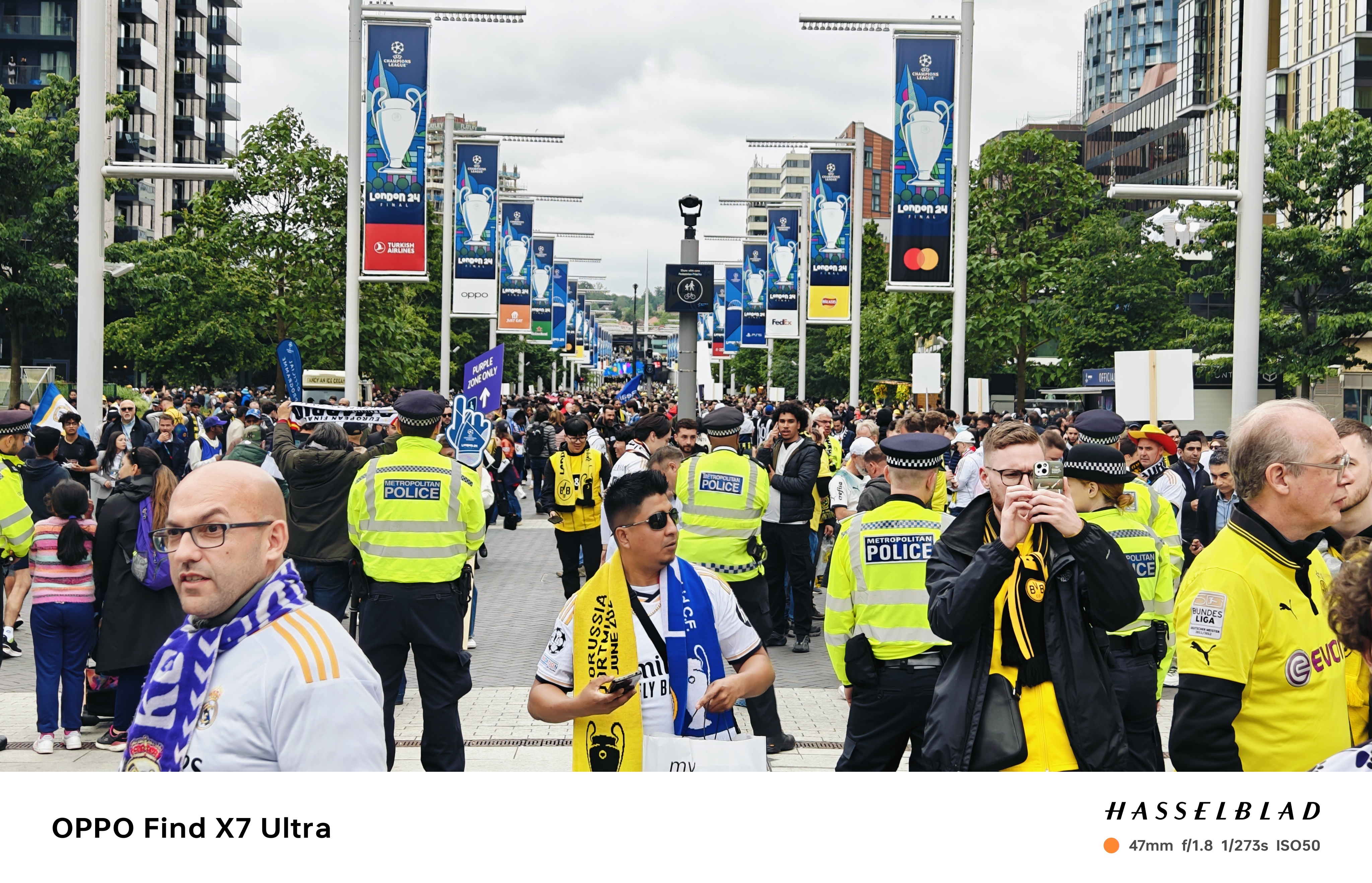
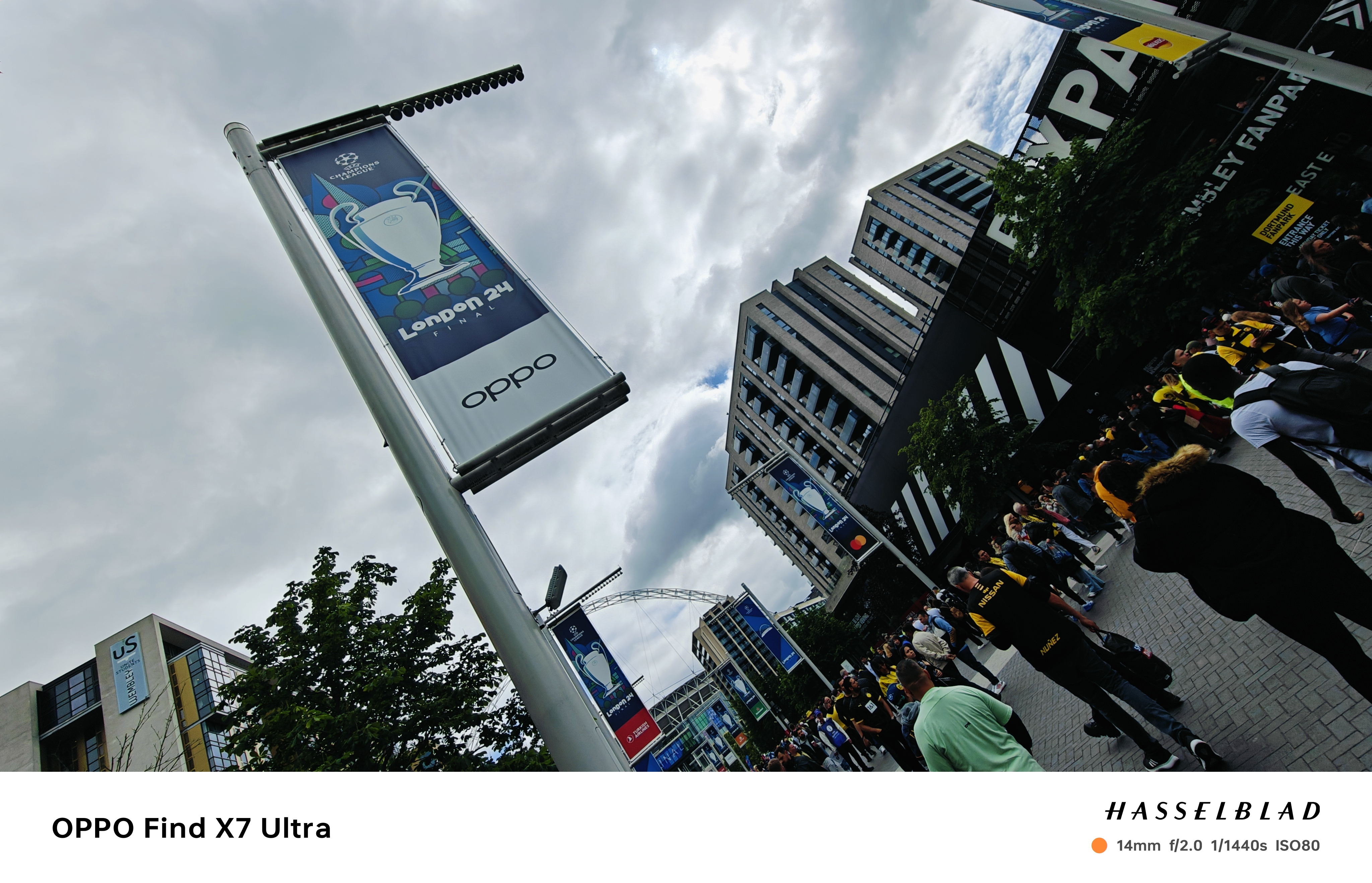
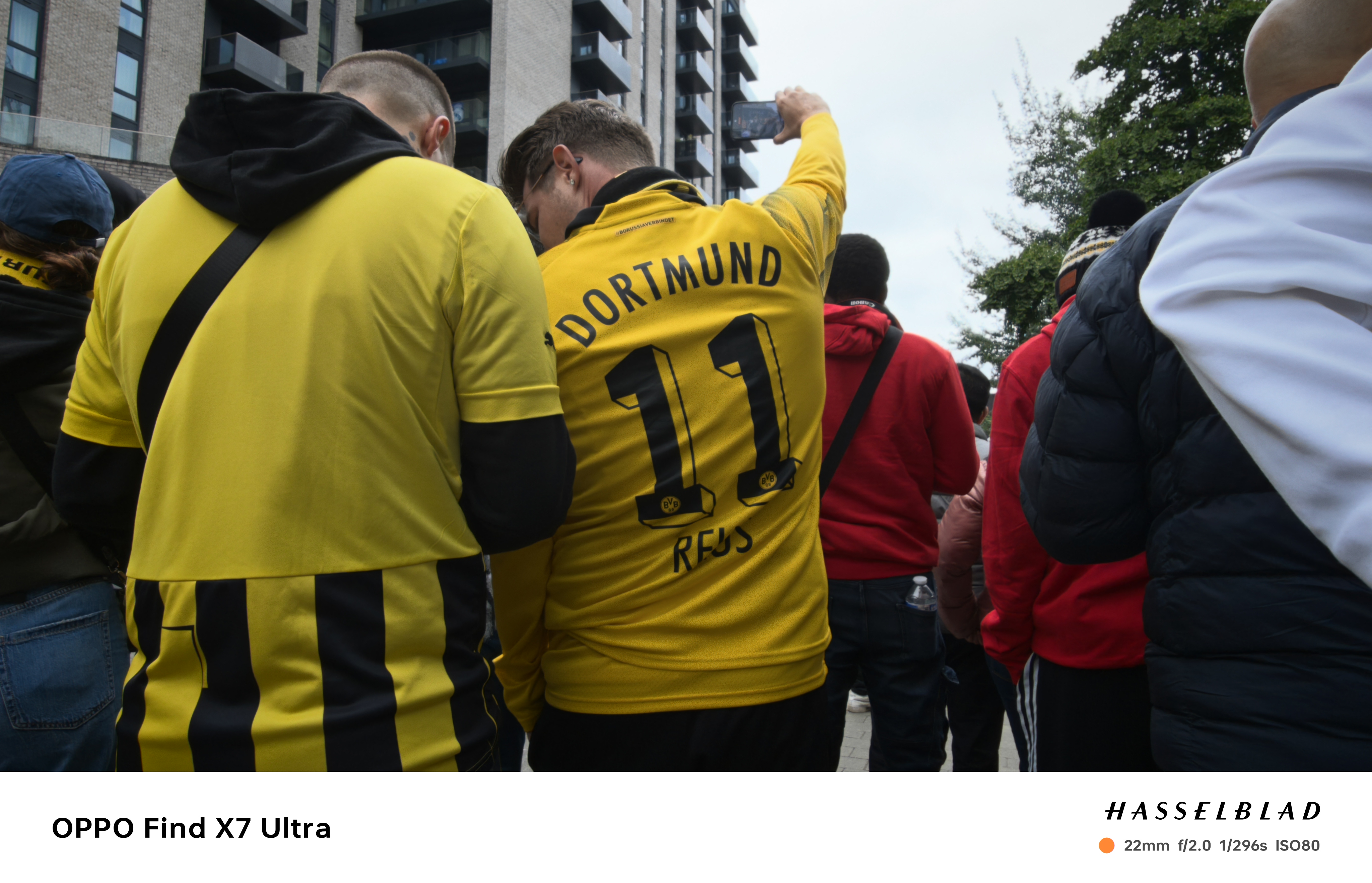
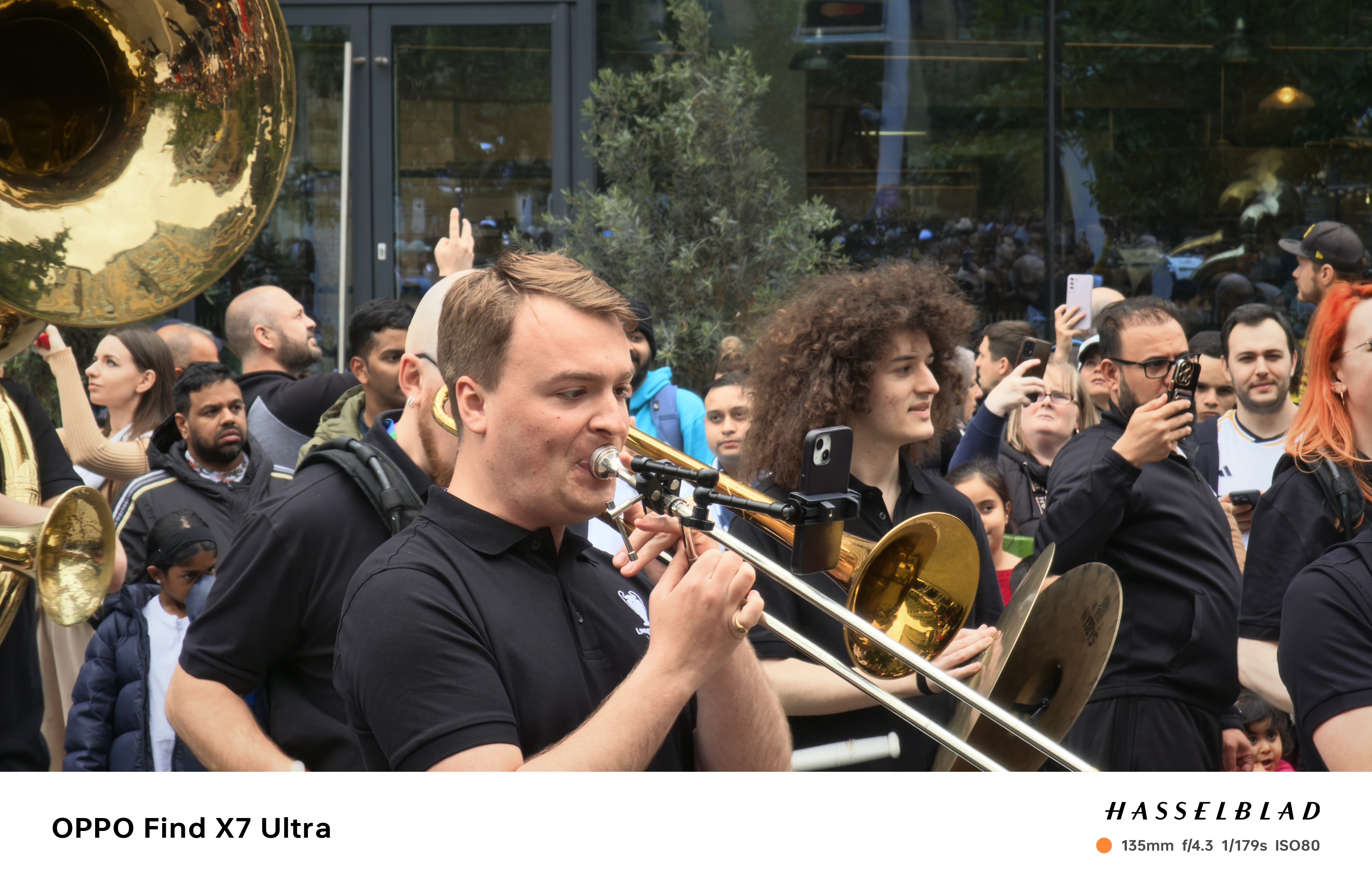
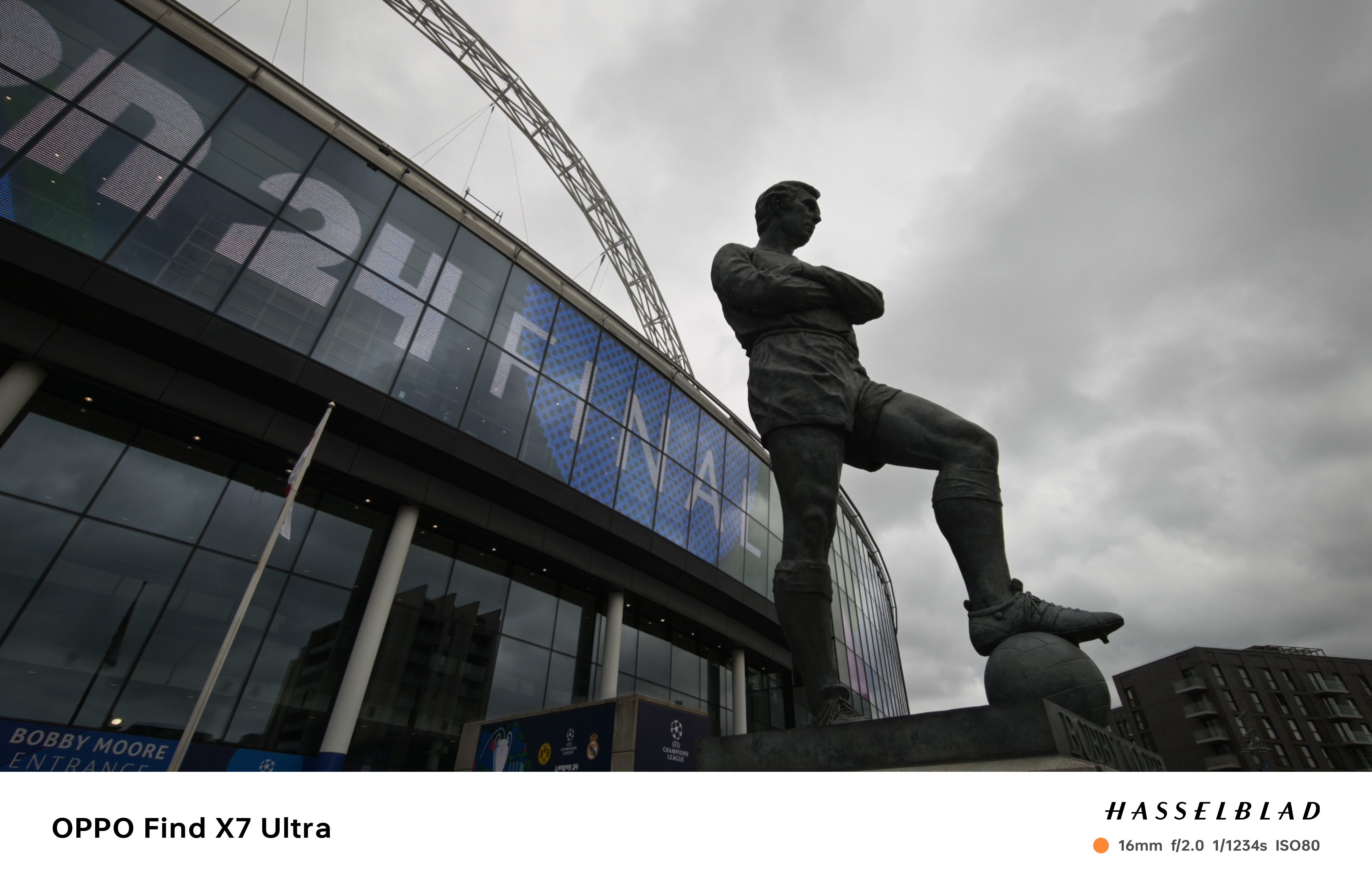
There were plenty of tests for the camera on the walk up to the stadium, along Wembley Way. Certainly, the yellows worn by the Borussia Dortmund fans gave the colour saturation a decent test, even on the largely overcast day in London.
Another tricky factor was that the display on the Oppo Find X7 Ultra is superb – LTPO AMOLED with a 120Hz refresh rate and QHD+ (3168 x 1440) resolution – so super bright and vibrant in its own right, so it was a bit difficult judging just how good the colour reproduction would be on a lesser screen.

However, as soon as I transferred the images onto my MacBook, I could see there was a better sense of realism punching through. Indeed, all of the images taken that day remind me of film, except when using the extended 10x zoom afforded through digital manipulation (you get 6x zoom optically). Seeing them for the first time on the laptop therefore was similar to getting your prints back from Boots – offering a sense of joy on the most-part that they'd come out even better than hoped.
That was amplified further by the fact that I had vowed not to edit or treat a single shot (not even by using the new AI Eraser functionality to get rid of photo-bombers). What I saw was what I got.
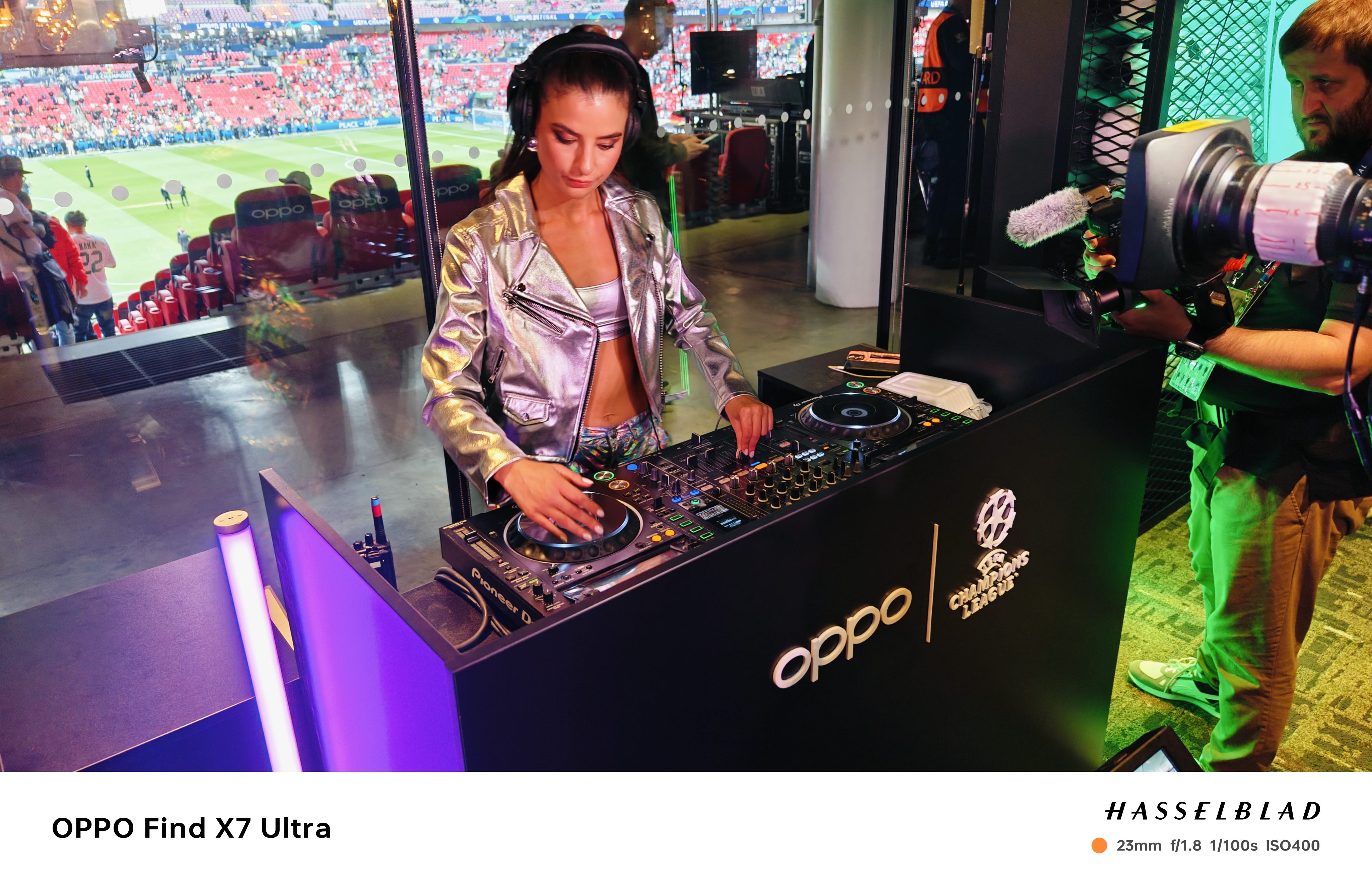

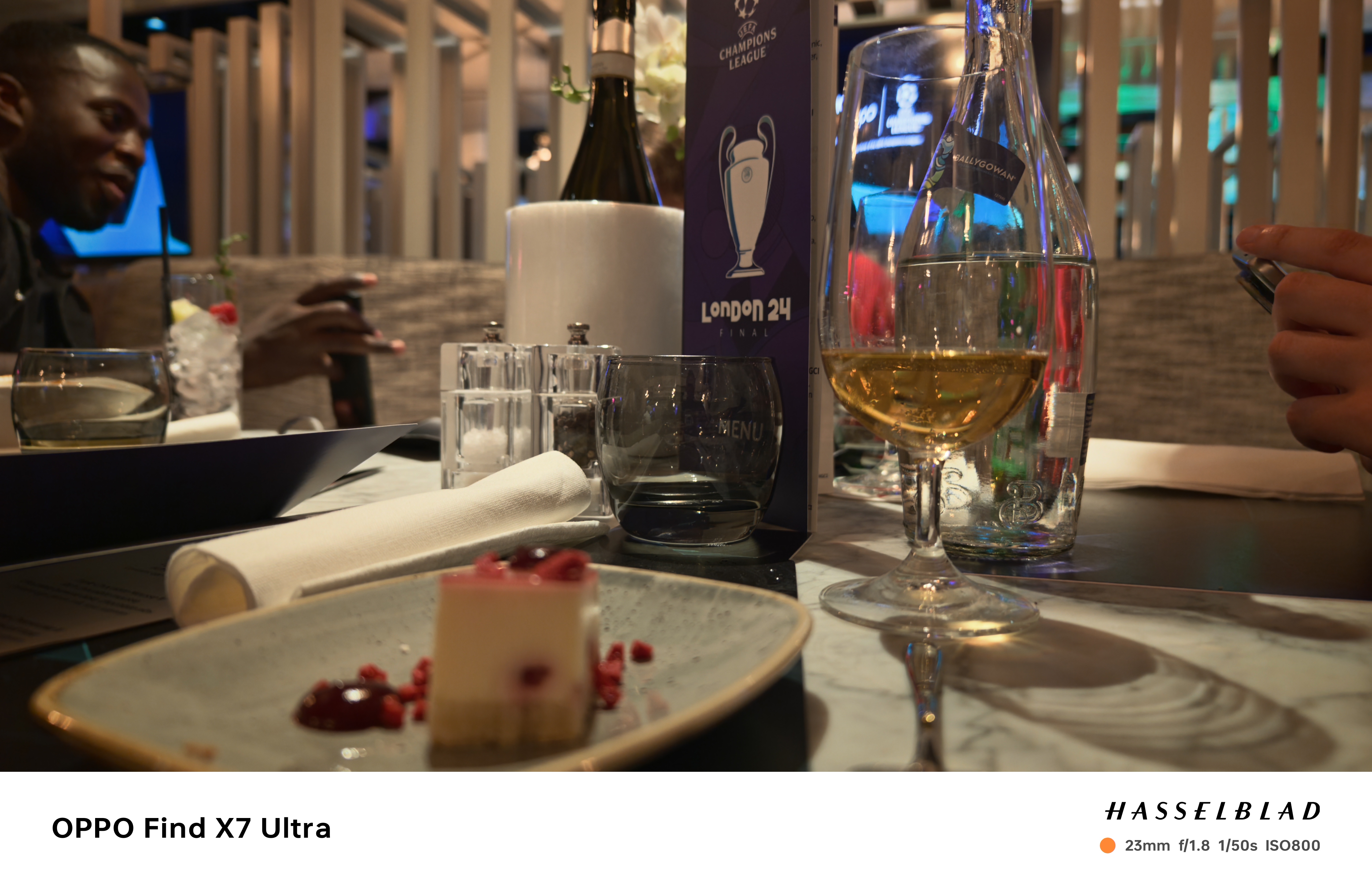
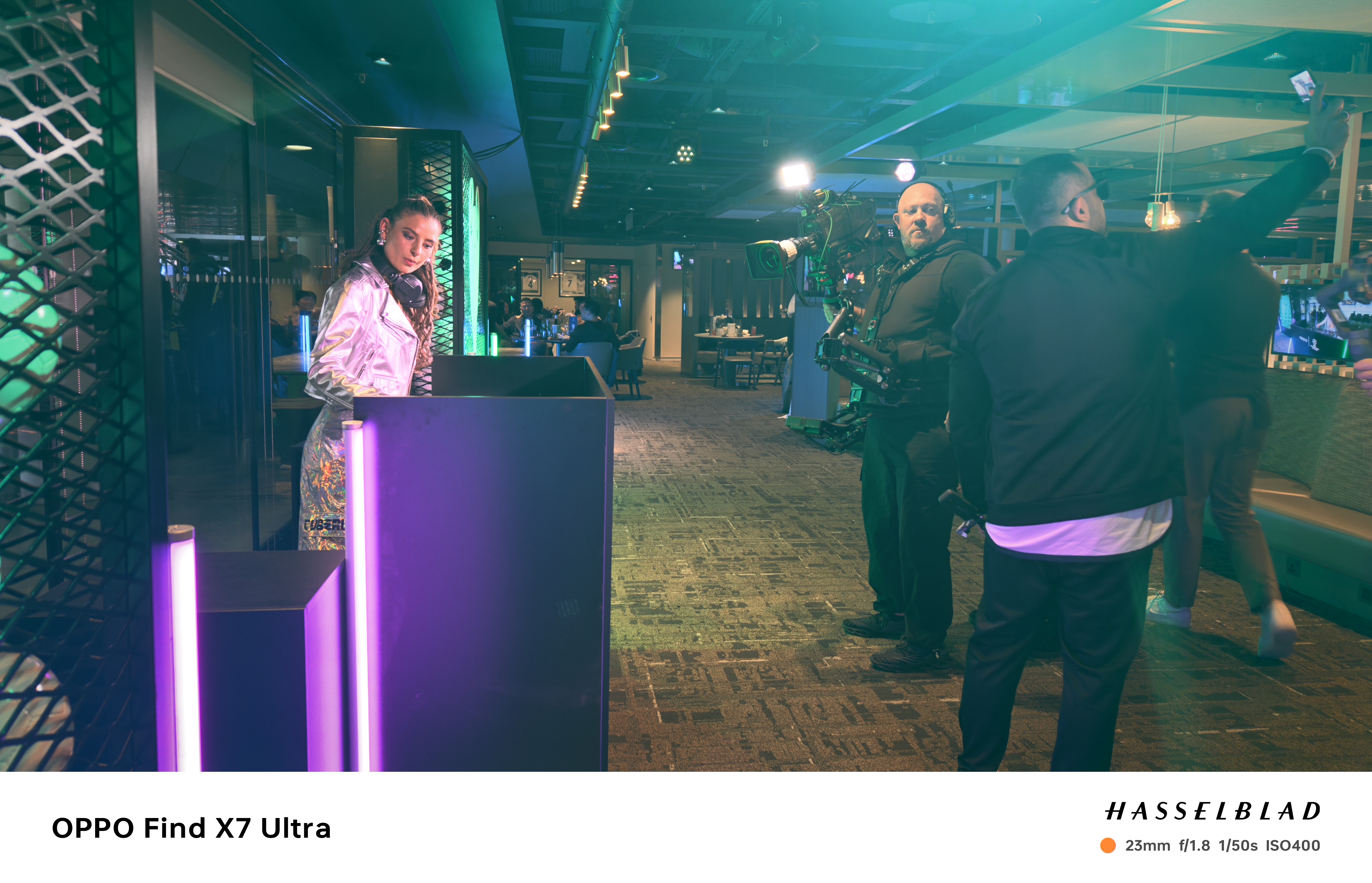
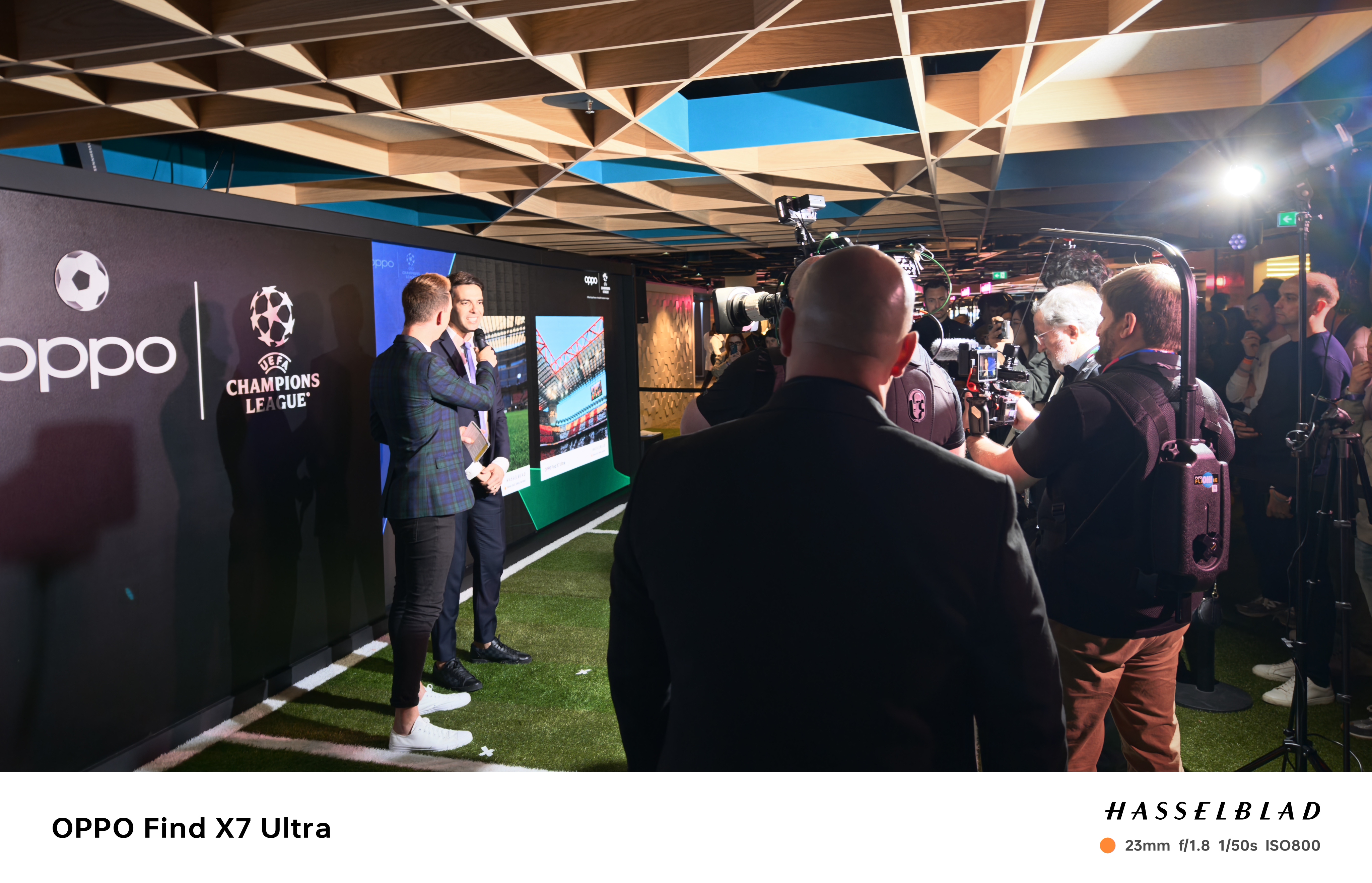
The film-like quality continued indoors, as I headed into Oppo's lounge at Wembley and got to shoot inside. That included a few pics of Brazil and Real Madrid legend Kaka, the brand's global ambassador.
I perhaps should have broken my rule and opted for manual focus in a few instances, especially during his appearance, but such are the limits I'd set for myself, to see how the camera can perform in a normal consumer-like situation. And even though some parts where overexposed when lighting was particularly bright, there wasn't a single shot I was particularly disappointed with.

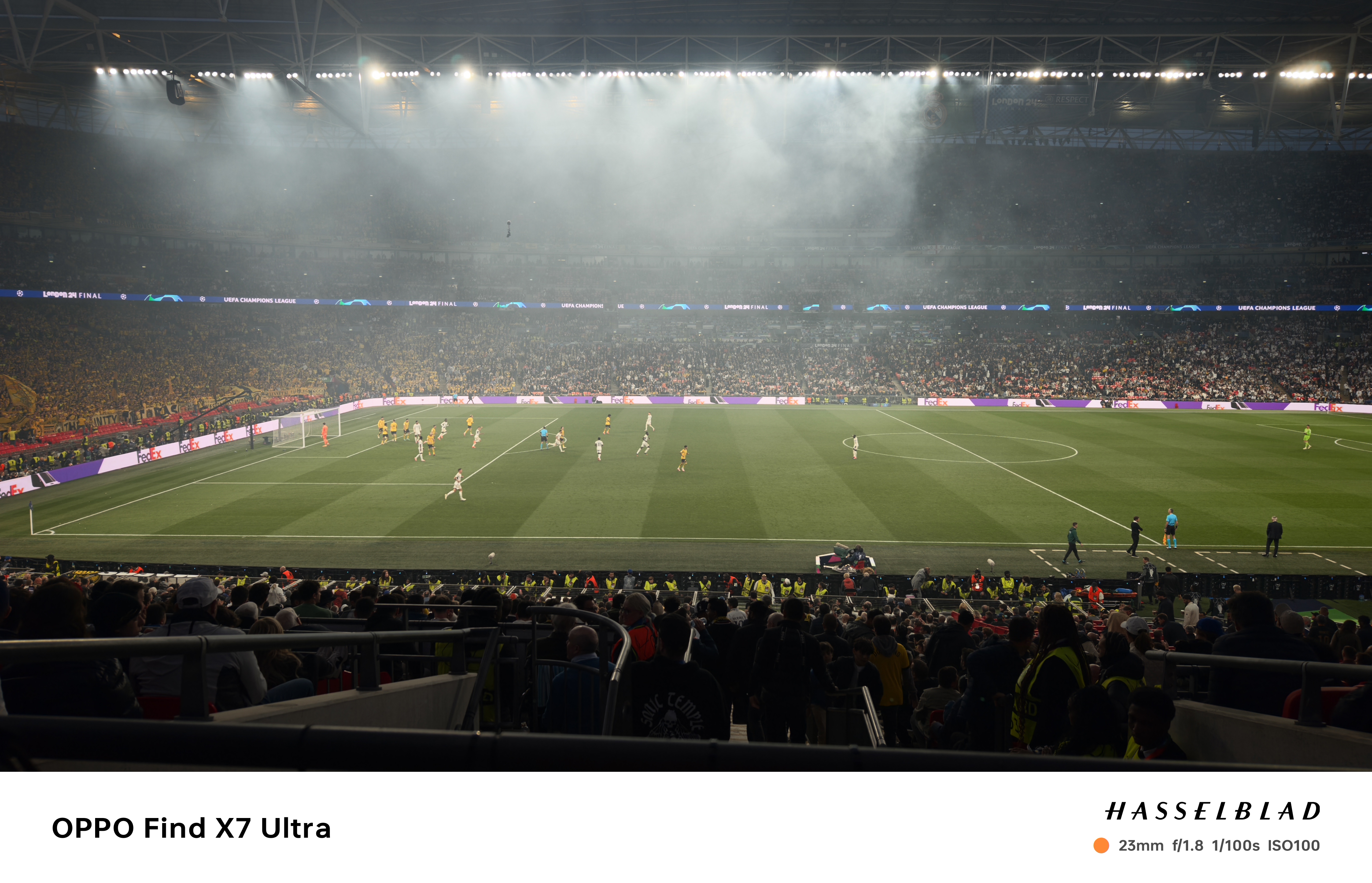
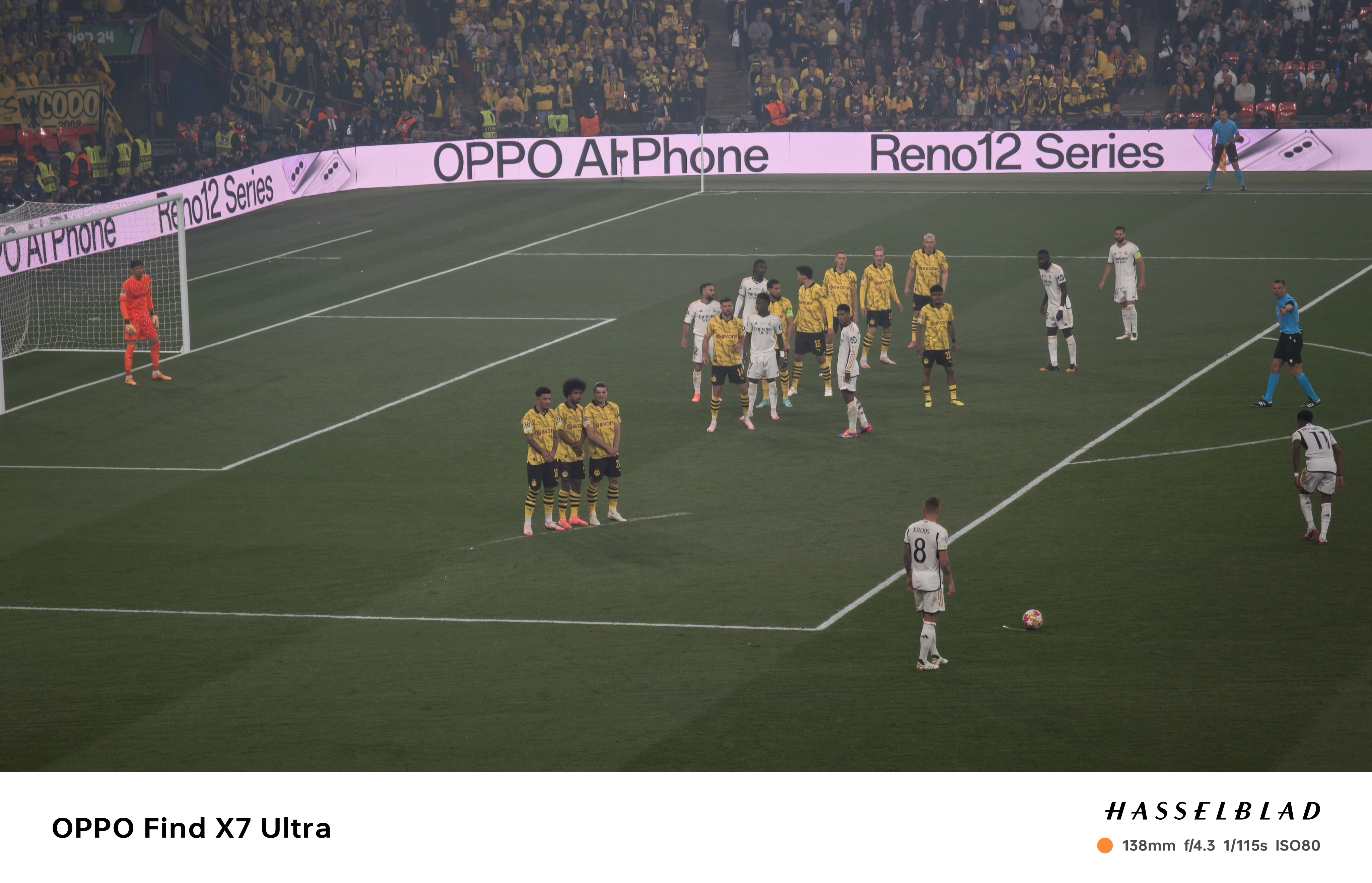
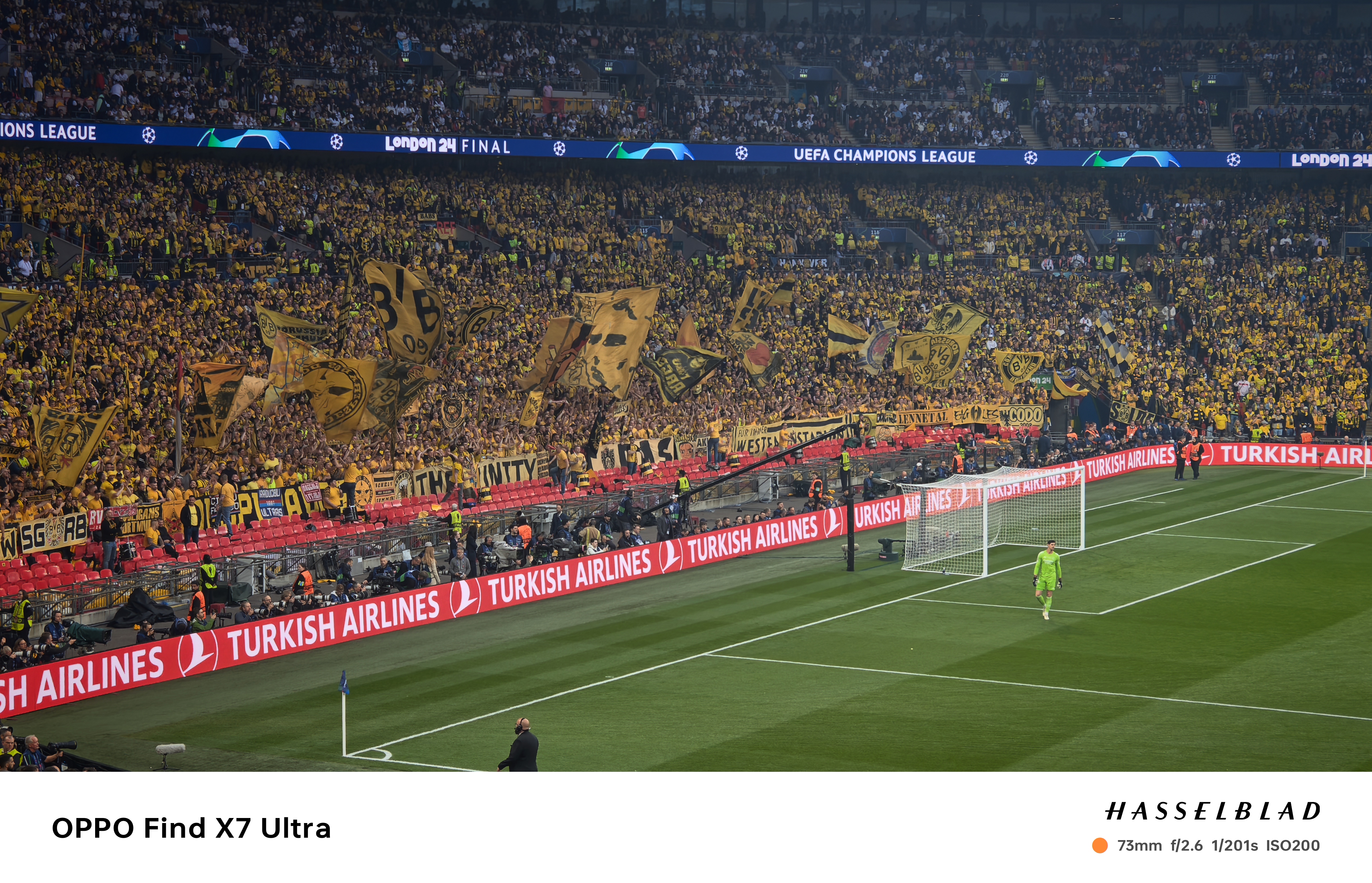
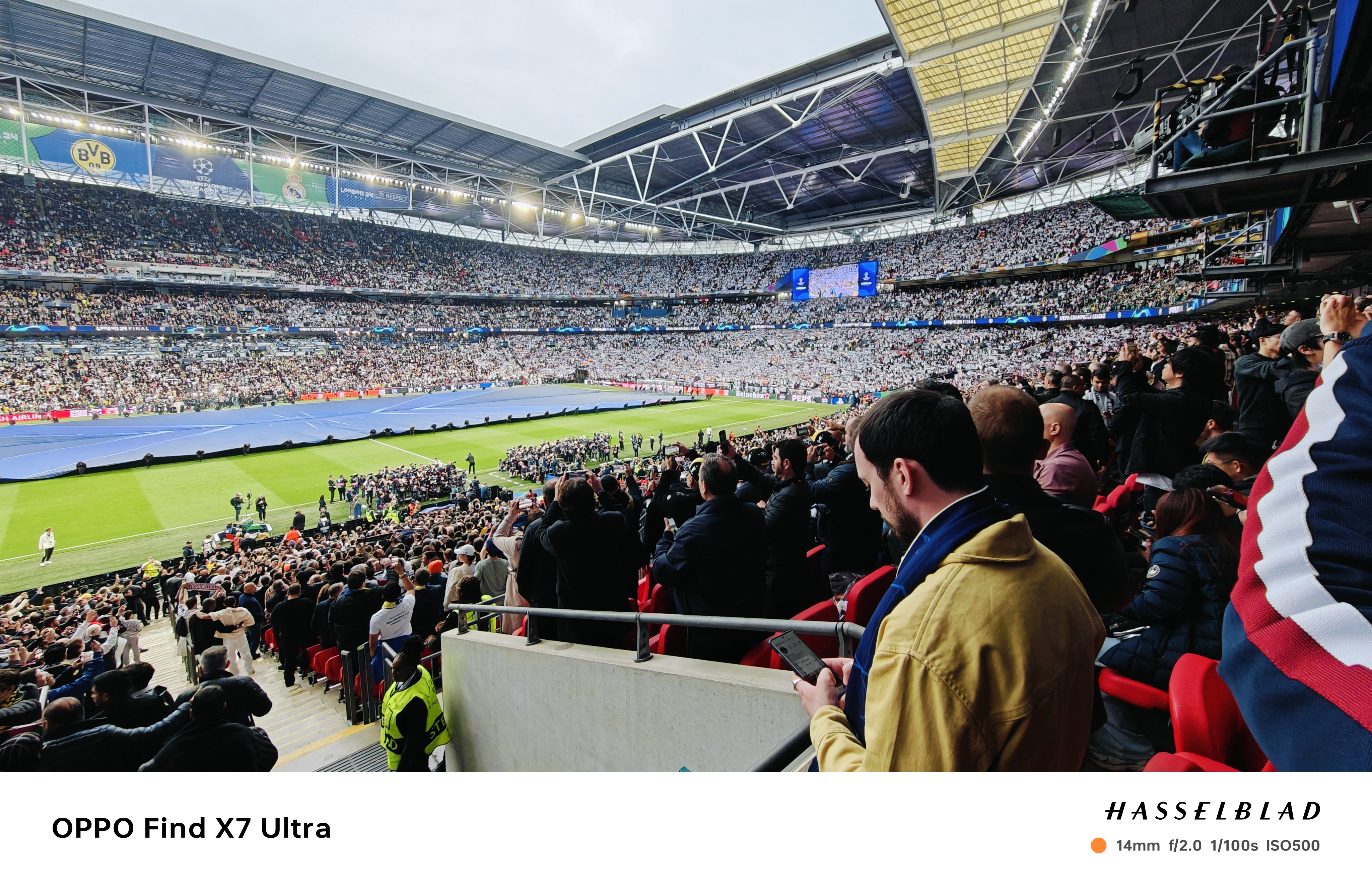
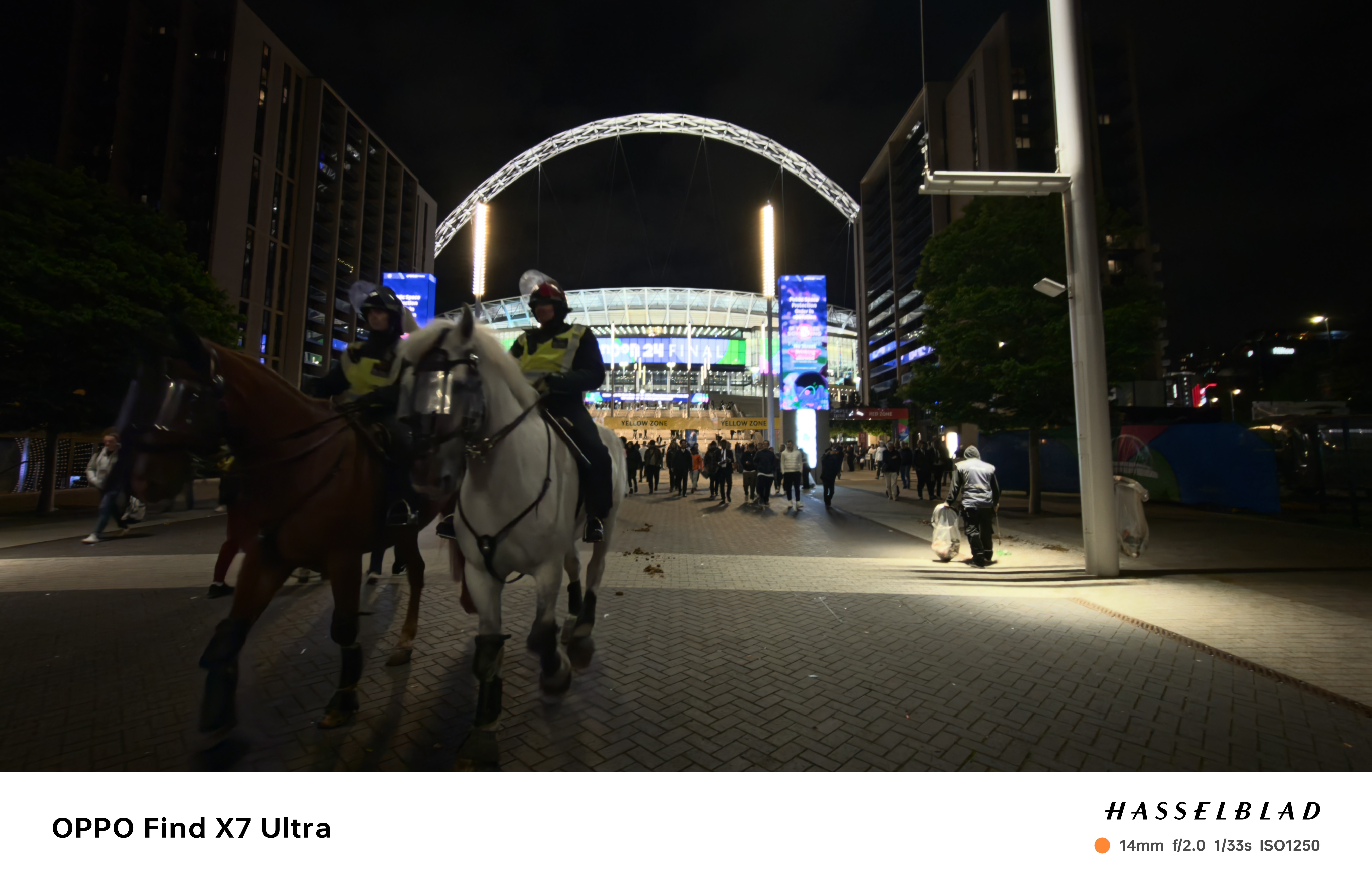
The final big test before heading home was outside during the match itself.
That started with the opening musical kickoff show – a Lenny Kravitz medley. The optical zoom and OIS really helped here, as I caught a firework-filled moment around his stage.
In comparison with images I've taken at gigs on other phones in the past, this was pretty spectacular – crisp and blur-free, even at ISO 50.
Indeed, the only criticism I can levy at the camera is when, as previously mentioned, I extended the zoom beyond its optical limit. As soon as the digital engine kicked in colours became over-saturated and less natural. That's generally par for the course, though, and anything within the limits is truly superb.
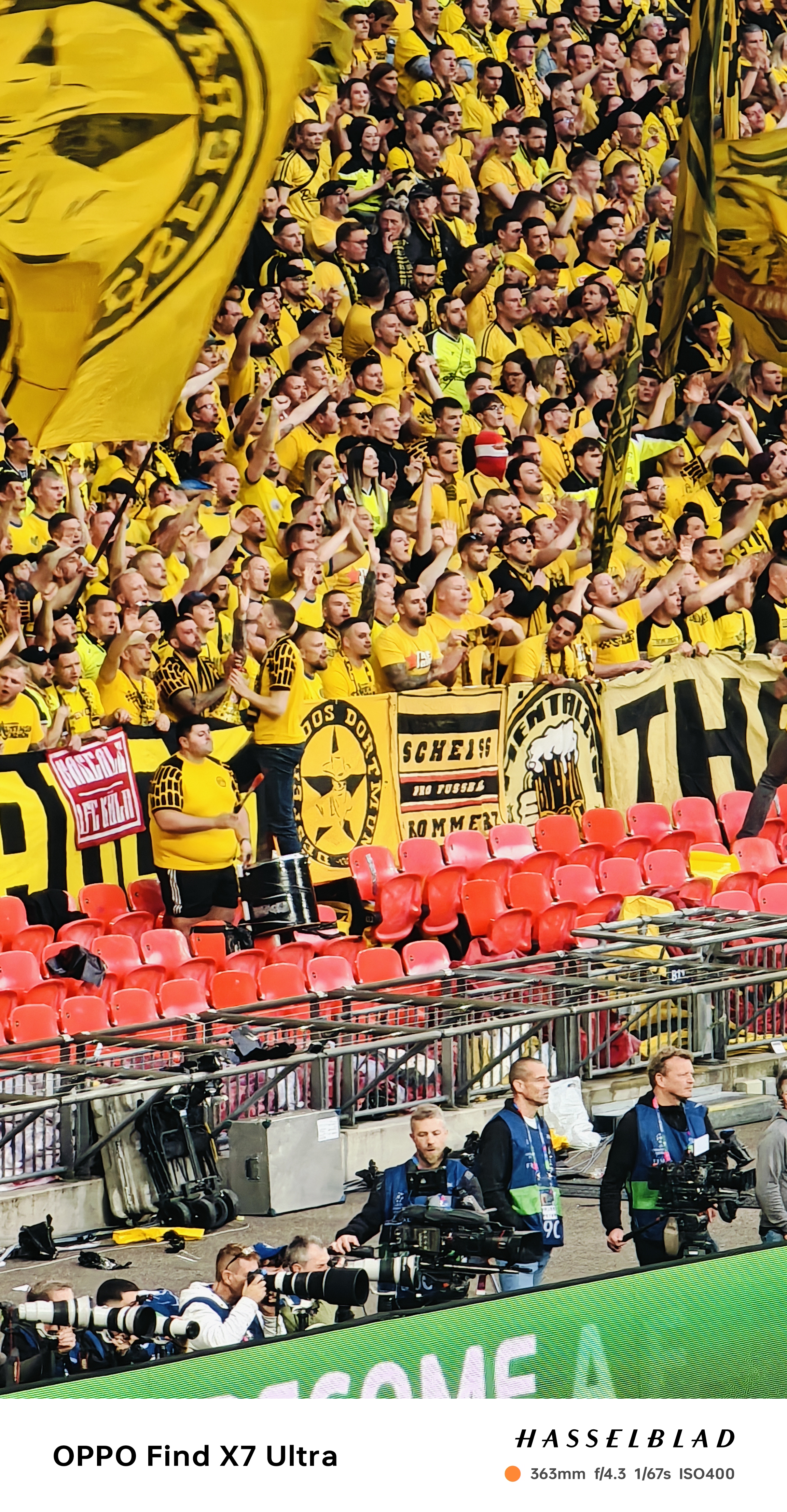
Considering where I was sat, some of the on-pitch close-ups were even worthy of my Canon 5D Mk III with a pro 135mm lens.
And so, it's easy to admit that I've been impressed all round. Whether this ends up being the best smartphone camera of 2024 depends on the other handsets planned for the year. It's definitely the best I've used in the six months so far.
It's just a shame that it won't natively be available in the UK or US for others to try out too. Maybe that will change in future, or a next generation device will come along that does make it to these shores. I hope so.
If that turns out to be the case, it could very well, like Real Madrid, end up being a winner.








